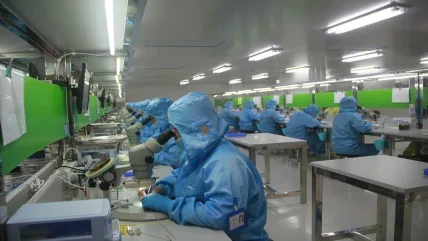
For almost all of its existence, the entire pharmaceutical sector has had one enemy standing head and shoulders above the rest – counterfeiting. From pet care to over the counter medications, skin creams and ointments to some of the most important therapies available, counterfeiting has been attempted. Anti-counterfeiting legislation has been around almost as long, with each new iteration being more intelligent, and complex, than the last.
In 2013, industry commentators opined regulators were looking to usher in a new era, fundamentally changing the climate for pharmaceutical manufacturing and distribution compliance, with a raft of new legislation aimed at better securing the supply chain, ultimately closing avenues for exploitation. That legislation is still being implemented today.
Act of tenderness
Making better use of newer technologies, US and European regulations were drafted and implemented in 2013, staggering their roll-out over the following decade in order to let manufacturers have the time needed to implement them. The introduction of the US Drug Supply Chain Security Act (DSCSA) and track and trace via serialisation through the Falsified Medicines Directive (FMD), almost seemed as though they were set to work in conjunction, tying counterfeiters’ hands.
“By allowing the use of global standards for product identification and data exchange, these regulations will enable increased automation in supply chain operations,” comments GS1’s director of public policy, Geraldine Lissalde-Bonnet.
She says the EU’s FMD recent deadline for implementation, 9 February 2019, and the US DSCSA, along with other requirements and developments, such as in Russia or China have been a major focus for companies working on regulatory implementation of pharmaceuticals’ traceability. It’s a view supported by Robert-Jan van der Horst of Centrient Pharmaceuticals. “Centrient Pharmaceuticals has successfully implemented serialisation along with our partners, contract manufacturing organisations (CMOs) and customers – those that hold our marketing authorisations. We are one of the few generic pharmaceutical companies that can say we were ready on time and in a compliant manner,” he says. “To get there, however, was a major challenge in terms of effort, technical challenges and preparation time.”
Year that the PSC was created.
For the sector, anti-counterfeiting packaging has perhaps never been so important, leading to an increase in spend on ever-more innovative technologies. A recent market analysis report published by Persistence Market Research concluded anti-counterfeiting packaging was set to enjoy ‘strapping growth’, largely driven by the US and Europe. It added the rising number of counterfeit products, along with increasing consumer awareness and the tightening of government regulations were the leading driver for its growth. However, it warned, the high costs associated with track and trace, and a lack of awareness for product originality were ‘expected to pose severe challenges to the growth of anti-counterfeiting packaging market’.
“For our business-to-business customers, it is essential that the active pharmaceutical ingredients (API) used in the medicines they sell to consumers can accurately and effectively be accounted for,” says Van der Horst. “Importantly, achieving better traceability of pharmaceuticals is key to ensuring patients are less exposed to falsified, expired, recalled, or otherwise harmful pharmaceuticals,” adds Lissalde- Bonnet. However, Van der Horst concedes, serialisation is a factor for companies looking to become active in the pharmaceutical market.
Up to the challenge
His views highlight the challenges smaller pharmaceutical companies face when trying to break into, or protect their position in, global and regional pharmaceutical markets. Lissalde-Bonnet explains, “The challenges are often related to the time frame for implementation as most of the requirements are to come into force during the same period, and due to the readiness for the industry, as not all the supply chain is able to implement.”
The pharmaceutical sector is changing, perhaps even undergoing a quiet revolution, with an increase in the number of smaller biopharmaceutical companies active. As attention shifts towards more tailored therapies treating smaller patient populations, niche developers are entering the mix. The challenge is they do not necessarily have the capacity, capability and clout of their bigger brothers. This is driving the growth in contract development and manufacturing organisations, and ultimately the supply chain. For mid-sized companies like Centrient Pharmaceuticals, formally DSM Sinochem Pharmaceuticals, Van der Horst says one of the most important things is to share the desire to be fully compliant with serialisation laws with their B2B customers. “It is our best way to assist in the fight against counterfeit medications,” he says. “We also actively encourage our generic pharmaceutical producing peers to join organisations such as the PSCI to ensure greater industry compliance.” The not-for-profit Pharmaceutical Supply Chain Initiative (PSCI) was established in 2006 with a mission to "promote responsible practices that will continuously improve social, health, safety and environmentally sustainable outcomes for our supply chains". Since, it has developed the Pharmaceutical Industry Principles for Responsible Supply Chain Management, leading to the creation of a supplier audit collaboration programme and supplier capability building programme. Members are pharmaceutical and healthcare companies, including AstraZeneca, Biogen, Celgene, Lilly, Novartis and Sanofi.
Van der Horst warns some API manufacturers are not members of such initiatives, to their detriment, and those using their products and the industry. “Irresponsible manufacturers add to the risk of medication that is not properly produced,” he says.
“The main challenge for SMEs in preventing counterfeits is often linked to compliance with requirements differing from one country to another,” adds Lissalde-Bonnet. “In addition, regardless of whether some will have already met the required timelines, the most important challenge is that the requirements are not always as clear as they could be and this increases potential non-compliance, thus increasing the risk that falsification may be achieved more easily.”
This way to global recognition
In 2012 McKinsey & Company published a report on global standards in healthcare, supported by GS1 highlighting the financial benefits to manufacturers. Savings were estimated at $43–62 million annually, representing around 1.6% of base revenue and 6–9% in earnings before taxes. These were calculated as coming from a reduction in inventory assets; inventory financing and holding cost; produce waste due to obsolescence; costs of recalls; and, most importantly, fewer counterfeit products.
However, as the McKinsey report acknowledges, getting to a position of being able to reduce costs, financially and ultimately in any damage to reputation, is a significant challenge, particularly if investment is difficult. “Indeed, in many instances significant investment will be needed in order to be able to meet the requirements that come with a comprehensive traceability system,” says Lissalde Bonnet. “However, there are resulting business benefits to be seen, and many organisations are undertaking their implementations of traceability from a strategic perspective in order to achieve those benefits.”
She adds that having a globally-defined regulatory framework for pharma traceability will assist in specifying the requirements as they move through adoption phases. “Using global standards will also enable pharmaceutical companies to improve their supply chain processes and to leverage interoperability while implementing one system of globally harmonised standards to address different traceability requirements.”
The report also warned of the threat posed by a inaction due to the concerns of high costs and lack of awareness for product originality. However, Van der Horst agrees concerns over cost are far outweighed by the benefits compliance can offer. “Additional measures to ensure compliance certainly don’t drive costs down. On the other hand, it is of great importance for Centrient Pharmaceuticals that our products are of the highest quality and fully compliant. Only with those as a given can we ask a fair price for our products from our customers.”
The drive to ensure the pharma industry employs track-and-trace technologies has gained pace in the past decade. However, the issues isn’t just one for pharmaceutical manufactures, its increasingly becoming a matter for the entire supply chain, including dispensers, repackagers and wholesale distributors too.
Technology holds the key
A recent call by the US Food and Drug Administration (FDA) served to highlight this. Later this year it will be launching a series of pilot projects aimed at further securing the prescription drug supply chain as part of the ongoing DSCSA roll-out, and introduction of drug tracing and verification system. “Under this programme, the FDA will work with stakeholders to establish one or more pilot projects to explore and evaluate methods to enhance the safety and security of the drug supply chain. This programme is open to supply chain stakeholders,” the regulator said. The goal is to help leverage new technologies to support the development of interoperable electronic systems.
It has been suggested, and not denied, the FDA is actively considering blockchain among those new technologies. The technology, that allows the secure transmission and sharing of information, has been a topic of much discussion in recent years. Its benefits mean data is stored across a network, making it harder to locate and manipulate. It also means that data is easily verifiable.
However, unlike the US, EU regulators have dismissed its potential, favouring a more traditional centralised option, to the disappointment of Van der Horst. “Blockchain could have been an option as a platform for serialisation. However, the EU and the industry decided differently,” he says. “We have now ended up with a landscape of several IT vendors, each of them with its own network.”
He says such a system results in more challenges for the industry, made more acute thanks to differences in the interpretation of standards. He argues one standard, such as GS1, should be applied “a common standard for identification”.
Asked how SME pharma companies and new entrants to the sector can best prepare themselves for new regulation in the distribution of their products, he believes, “It is important to select an ideal IT vendor and look for synergies within the current IT landscape. The more harmonised the IT landscape, the greater the integration benefits, with a tool close to ERP systems, and a seamless business process. In companies with a very scattered IT landscape, it might be more advisable to go for cloud solutions. But then some parts of the business processes need much more attention as the end-to-end process cannot be fully automated. Supply chain benefits will be much harder to obtain too.”
Geraldine Lissalde-Bonnet
He adds that February’s implementation of the EU FMD, along with DSCSA in the US, shows that the ability to account for the complete production of medicines across the global supply chain is increasingly important. However, he warns we are likely not yet fully protected from the curse of the counterfeiter. “For sure, counterfeiting will find its way into the marketplace, but now with 2D barcode scanning at the point of decommissioning, the likelihood of detection of falsified medicines has increased. How great the challenges will be for the counterfeiter in the future is not yet clear.”
It’s clear that for smaller and mid-sized pharma, and their supply chain, being compliant is more than just knowing the law and meeting its requirements. Investment is a major issue. Whether technology can help reduce that burden remains the big question, but one thing is for sure, having your products replicated by a counterfeiter is likely far more costly.





